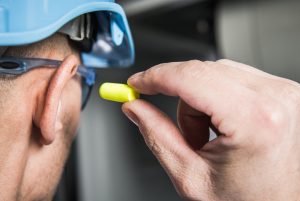
In the United States, hearing loss is the third most common chronic physical condition after high blood pressure and arthritis. Not surprisingly, hearing loss is among the most common work-related illnesses. Workers are faced with occupational noise hazards every day. The National Institute for Occupational Safety and Health (NIOSH) estimates that 30 million U.S. workers are exposed to noise levels high enough to cause irreversible hearing loss.
Why is prevention important? Almost all work-related hearing loss is permanent, and it can have a profound impact on quality of life. As hearing loss worsens, hearing and understanding others becomes increasingly difficult, which can lead to isolation. Ringing in the ears (tinnitus), which often occurs along with hearing loss, can disrupt sleep and concentration. Most importantly, hearing loss can impact safety at home and on the job. Fortunately, with today’s hearing loss prevention strategies and technologies, work-related hearing loss can be nearly always prevented.
Here are a few suggestions workers can use to help prevent hearing loss.
Find out if the noise in your workspace is hazardous.
If you must raise your voice to speak with someone at arm’s length, then the noise is likely at a hazardous level. You can also check the noise level using a sound level meter app on your phone, such as the NIOSH Sound Level Meter app, levels below 85dBA are considered safe.
Reduce your noise exposure.
Reduce your time in noisy areas and increase the distance between you and the source of the noise. Always wear hearing protection in noisy areas, and if using foam plugs, insert them correctly. If you are listening to music or something else, keep the volume at a safe level and only listen in areas that are not noisy.
Reduce or stop exposure to chemicals that may damage your hearing.
Use a less-toxic or non-toxic chemical. Wear gloves, long sleeves, eye and ear protection. Read and follow all chemical safety instructions.
Source: CDC

